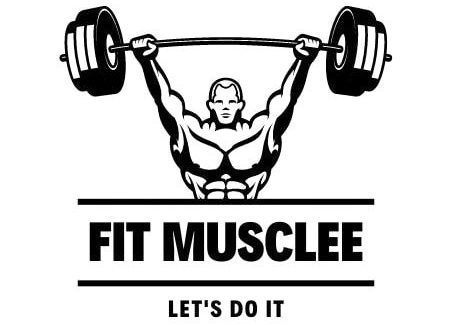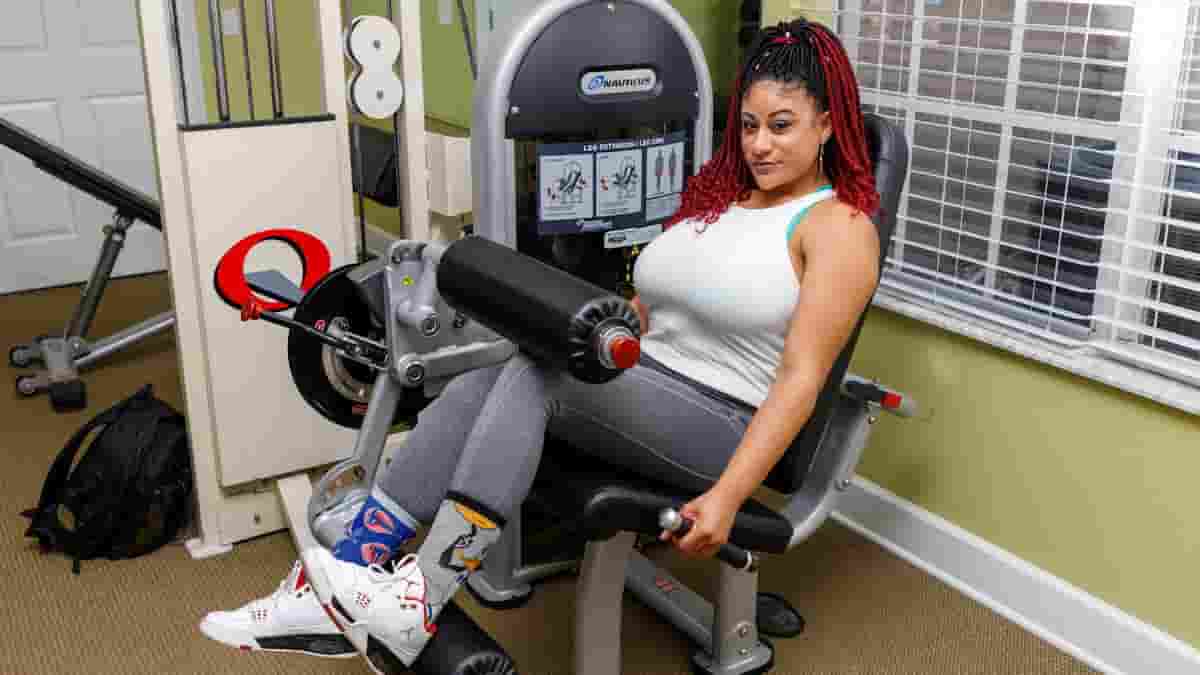Here is your complete guide to leg exercise machines
Introduction to Leg Exercise Machines
When it comes to fitness, many people focus on upper body exercises and neglect their legs. However, strong and toned legs are essential for overall fitness and functional movement. Leg exercise machines are a great way to target specific leg muscles and achieve your fitness goals. In this article, we will discuss the different types of leg exercise machines, their benefits, and how to use them properly.
Leg exercise machines are workout machines that target the muscles in your legs. They come in various forms, each with its unique function and benefits. These machines can help you improve your leg strength, increase muscle mass, and reduce the risk of injury. However, it’s essential to use them correctly and with proper technique to avoid injuries and maximize their benefits.
Types of Leg Exercise Machines
There are several types of leg exercise machines, each targeting different leg muscles. Here are some of the most popular leg exercise machines:
Leg Press Machines
- Description and Function: The leg press machine is a workout machine that targets the quadriceps, glutes, and hamstrings. It consists of a platform that you push away with your feet while sitting or lying down.
- Benefits and Muscle Groups Targeted: The leg press machine is an excellent exercise for building lower body strength and muscle mass. It targets the quadriceps, glutes, and hamstrings, making it a great exercise for overall leg development.
- How to Use and Proper Technique: To use the leg press machine, sit down with your back against the pad and place your feet on the platform. Adjust the seat to ensure your knees are at a 90-degree angle. Push the platform away with your feet, extending your legs without locking your knees. Slowly return to the starting position and repeat.
- Variations and Modifications: You can modify the leg press machine by changing the foot position or using a single leg.
Leg Curl Machines
- Description and Function: The leg curl machine is a workout machine that targets the hamstrings. It consists of a padded lever that you pull towards your body while lying down.
- Benefits and Muscle Groups Targeted: The leg curl machine is an excellent exercise for building hamstring strength and muscle mass. It also helps improve your functional movement and mobility.
- How to Use and Proper Technique: To use the leg curl machine, lie down with your legs extended and place your feet on the padded lever. Adjust the machine to ensure the pads are at the back of your ankles. Pull the lever towards your body, keeping your knees close together. Slowly return to the starting position and repeat.
- Variations and Modifications: You can modify the leg curl machine by changing the resistance or using a single leg.
Leg Extension Machines
- Description and Function: The leg extension machine is a workout machine that targets the quadriceps. It consists of a padded lever that you lift with your legs while sitting down.
- Benefits and Muscle Groups Targeted: The leg extension machine is an excellent exercise for building quadriceps strength and muscle mass. It also helps improve your knee stability and functional movement.
- How to Use and Proper Technique: To use the leg extension machine, sit down with your back against the pad and place your feet under the padded lever. Adjust the machine to ensure the pads are at the front of your ankles. Lift the lever with your legs, extending them without locking your knees. Slowly return to the starting position and repeat.
- Variations and Modifications: You can modify the leg extension machine by changing the resistance or using a single leg.
Calf Raise Machines
- Description and Function: The calf raise machine is a workout machine that targets the calves. It consists of a platform that you stand on and a padded lever that you lift with your toes.
- Benefits and Muscle Groups Targeted: The calf raise machine is an excellent exercise for building calf strength and muscle mass. It also helps improve your ankle stability and functional movement.
- How to Use and Proper Technique: To use the calf raise machine, stand on the platform with your heels hanging off the edge. Place the padded lever on your shoulders and adjust the machine to ensure it’s secure. Lift the lever with your toes, extending your ankles. Slowly return to the starting position and repeat.
- Variations and Modifications: You can modify the calf raise machine by changing the resistance or using a single leg.
Adduction and Abduction Machines
- Description and Function: The adduction and abduction machines are workout machines that target the inner and outer thighs. They consist of a padded lever that you move with your legs while sitting down.
- Benefits and Muscle Groups Targeted: The adduction and abduction machines are excellent exercises for building inner and outer thigh strength and muscle mass. They also help improve your hip stability and functional movement.
- How to Use and Proper Technique: To use the adduction machine, sit down with your legs apart and place your inner thighs on the padded lever. Adjust the machine to ensure the pads are at the right height. Move the lever towards the midline of your body, keeping your knees together. Slowly return to the starting position and repeat. To use the abduction machine, sit down with your legs together and place your outer thighs on the padded lever. Move the lever away from the midline of your body, keeping your knees together. Slowly return to the starting position and repeat.
- Variations and Modifications: You can modify the adduction and abduction machines by changing the resistance or using a single leg.
Comparison of Different Leg Exercise Machines
| Machine | Muscle Group Targeted | Benefits |
|---|---|---|
| Leg Press | Quadriceps, Glutes, Hamstrings | Build lower body strength and muscle mass |
| Leg Curl | Hamstrings | Build hamstring strength and muscle mass |
| Leg Extension | Quadriceps | Build quadriceps strength and muscle mass |
| Calf Raise | Calves | Build calf strength and muscle mass |
| Adduction/Abduction | Inner/Outer Thighs | Build inner/outer thigh strength and muscle mass |
Benefits of Leg Exercise Machines
Leg exercise machines offer several benefits, including:
- Improved leg strength and endurance: Leg exercise machines help you build leg strength and endurance, making it easier to perform daily activities and reducing the risk of injury.
- Increased muscle mass and tone: Leg exercise machines help you build muscle mass and tone, giving your legs a more defined and aesthetic appearance.
- Reduced risk of injury: Leg exercise machines help you improve your functional movement and mobility, reducing the risk of injury during daily activities and sports.
- Improved overall fitness: Leg exercise machines help you improve your overall fitness by targeting specific leg muscles and improving your leg strength and endurance.
How to Use Leg Exercise Machines
To use leg exercise machines properly, follow these steps:
- Proper setup and adjustment: Adjust the machine to fit your body size and shape. Make sure the seat, pads, and levers are at the right height and position.
- Warm-up and cool-down: Warm up your muscles before using the machine by doing some light cardio or dynamic stretches. Cool down your muscles after using the machine by doing some static stretches.
- Proper technique and form: Use the machine with proper technique and form to avoid injuries and maximize its benefits. Keep your back straight, your knees aligned with your toes, and your movements slow and controlled.
- Common mistakes and how to avoid them: Avoid common mistakes such as using too much weight, using improper form, and not adjusting the machine to fit your body.
Proper Technique and Form for Leg Exercise Machines
| Machine | Proper Technique and Form |
|---|---|
| Leg Press | Keep your back against the pad, your knees aligned with your toes, and your movements slow and controlled |
| Leg Curl | Keep your knees close together, your movements slow and controlled, and your back flat on the pad |
| Leg Extension | Keep your knees aligned with your toes, your movements slow and controlled, and your back against the pad |
| Calf Raise | Keep your heels off the edge, your movements slow and controlled, and your back straight |
| Adduction/Abduction | Keep your knees together, your movements slow and controlled, and your back against the pad |
Common Mistakes and How to Avoid Them
| Machine | Common Mistakes | How to Avoid Them |
|---|---|---|
| Leg Press | Using too much weight, using improper form | Use proper form, use appropriate weight |
| Leg Curl | Using too much weight, using improper form | Use proper form, use appropriate weight |
| Leg Extension | Using too much weight, using improper form | Use proper form, use appropriate weight |
| Calf Raise | Using too much weight, using improper form | Use proper form, use appropriate weight |
| Adduction/Abduction | Using too much weight, using improper form | Use proper form, use appropriate weight |
Frequency of Using Leg Exercise Machines
| Frequency | Recommendation |
|---|---|
| Beginner | 1-2 times per week |
| Intermediate | 2-3 times per week |
| Advanced | 3-4 times per week |
Read Also: Keto Nut Butter.
FAQs
What are leg exercise machines?
Leg exercise machines are workout machines that target the muscles in your legs.
Read Also: Keto Friendly Yogurt.
How do leg exercise machines work?
Leg exercise machines work by allowing you to perform specific exercises that target different leg muscles. They often use resistance or weight to challenge your muscles and help you build strength and muscle mass.
Read Also: Lazy Keto Meals.
What are the benefits of using leg exercise machines?
They offer several benefits, including improved leg strength and endurance, increased muscle mass and tone, reduced risk of injury, and improved overall fitness.
Read Also: Almond Flour Alternative.
What are the best leg exercise machines for home use?
The best leg exercise machines for home use depend on your specific fitness goals and space constraints. Some popular options include the leg press machine, the leg curl machine, and the leg extension machine.
Read Also: Keto Friendly Cheese.
How often should I use leg exercise machines?
The frequency of using leg exercise machines depends on your fitness level and goals. A general recommendation is to use them 2-3 times per week, with at least one day of rest in between.
Read Also: The Surprising Health Benefit of Celery Tea.
Conclusion
Leg exercise machines are a great way to target specific leg muscles and achieve your fitness goals. By understanding the different types of leg exercise machines, their benefits, and how to use them properly, you can maximize their benefits and avoid injuries. Remember to use proper technique and form, warm up and cool down your muscles, and avoid common mistakes. With consistent use and proper technique, leg exercise machines can help you build leg strength, increase muscle mass, and improve your overall fitness.
Read Also: Allulose vs Monk Fruit.

